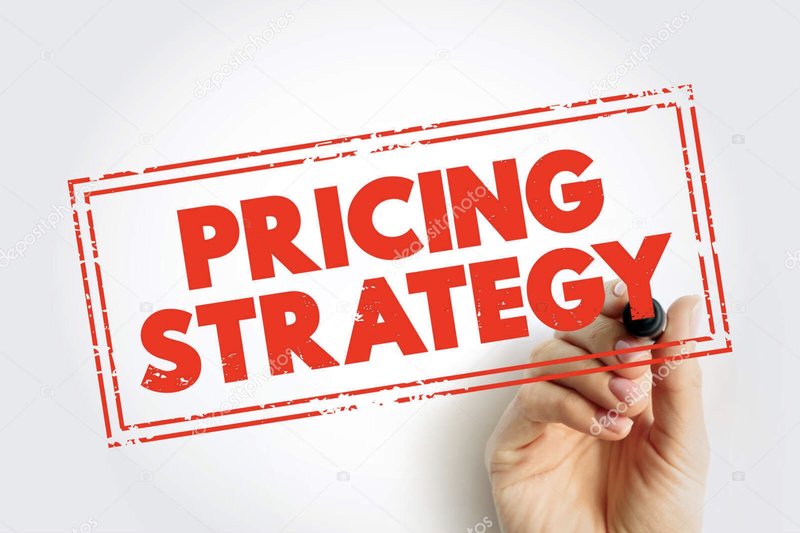Entering the world of fractional marketing consultancy means striking a balance between competitive pricing and reflecting high-end strategic expertise. Establishing fair, sustainable rates positions you for long-term client success and business growth. This comprehensive guide will walk you through setting your rates, market insights, pricing models, pricing psychology, client alignment, negotiation strategies, and practical tools to scale confidently.
Market Benchmarks and Pricing Landscape
Australian Market Norms
Based on industry data and practitioner insight, fractional marketing consultants and fractional CMOs in Australia typically command:
- Hourly rates ranging from AUD 220 to AUD 380, depending on track record, sector specialisation, and executive-level experience.
- Daily rates pegged at AUD 1,400 to AUD 3,000, assuming a 7–8 hour workday, especially for senior-level fractional leadership.
- Monthly retainers from AUD 7,500 to AUD 18,000+, aligned to approximately one to two days per week of committed support.
- Project or engagement-based fees between AUD 15,000 to AUD 60,000, often over 3–6 months for complete strategic transformations or campaign rollouts.
These ranges reflect premium positioning in the Australian consulting ecosystem. Consultants with niche specialisms (e‑commerce growth marketing, martech systems implementation, sustainability marketing, or regulated industries like finance or health) often charge at the higher end of the spectrum.
Global and Local Trends
Globally, fractional consultancy is growing rapidly in the SMB–mid market segment, but Australia lags slightly behind in awareness. Fractional leadership adoption remains under 3% in the local market, meaning high‑value clients still seek trusted senior marketers for interim and strategic needs.
Key trends influencing pricing:
- Rising demand for digital transformation and martech expertise, especially post‑pandemic.
- Boards and founders increasingly open to interim or fractional CMO leadership to drive growth with cost flexibility.
- Economic caution: many clients favour retainer or project-based pricing over open-ended day rates to control budgets.
Structuring Your Pricing Models

Hourly Engagements
Best for short audits, workshops, strategy sessions, or emergency support. Pros: easy to quote, scalable. Cons: less predictable revenue.
Rates:
- Junior/mid‑level fractional marketer: AUD 220–260/hour
- Senior strategist/Fractional CMO: AUD 300–380/hour
Example: A two-hour digital strategy audit or onboarding kick‑off call.
Daily Rates
Ideal for intensive strategy days, stakeholder workshops, or full‑day planning sessions. A 7‑8 hour day billed at daily rate gives clear value.
Rates:
- Mid-tier marketing consultant: AUD 1,500–2,200/day
- High-end fractional CMO: AUD 2,200–3,000/day
Example: Full‑day marketing planning for a scaling tech startup.
Monthly Retainer
Preferred for consistent support over time. Retainers bundle a defined number of days/hours per month.
Retainer tiers:
- Bronze (0.5 day/week): ~AUD 7,500–9,000/month
- Silver (1 day/week): ~AUD 12,000–14,500/month
- Gold (2 days/week): ~AUD 18,000–20,500/month
Higher tiers offer premium add‑ons like KPI dashboards, executive reporting or vendor coordination.
Project-Based Pricing
Recommended for defined-scope engagements such as marketing transformation or brand refresh programmes over a fixed term (e.g. 3–6 months).
Fee examples:
- Small scale (3-month roadmap): AUD 15,000–25,000
- Mid-size (marketing system overhaul): AUD 25,000–45,000
- Large (full multi-channel transformation): AUD 45,000–60,000+
Include clear deliverables, performance criteria, and milestone payments in proposals.
Factors That Should Shape Your Pricing Choices
Your Experience and Specialisation
- Consultants with 10+ years of strategic marketing leadership, board-level reporting, or transformation track records command higher rates.
- Specialisations in high-demand niches, e.g. DTC growth, B2B SaaS, financial services, or regulatory environments, support premium pricing.
- Certifications or proven systems (for example, Agile marketing, MarTech stack optimisation, sustainability frameworks) further justify higher billing.
Client Segment and Industry Complexity
- Small‑medium businesses (SMBs) may have budgets suited to AUD 5–10k retainers.
- Mid-market or growth-phase enterprises often opt for AUD 12–20k/month retainers or long‑term project fees. Bringing in a seasoned marketing strategist on a fractional basis can unlock consistent performance without full-time overhead.
- Regulated sectors or multinational firms often need deeper marketing compliance and integration, warranting higher daily or retainer rates.
Engagement Scope and Duration
- One‑off short-term engagements: rate per hour/day.
- Ongoing strategic partnerships: retainer preferred.
- Defined multi‑month work: project-based fee with milestones.
Risk, Guarantee and Payment Terms
- If you're offering performance‑linked outcomes (e.g., lead targets, sales uplift), pricing must account for shared risk.
- Upfront deposits (e.g. 50%) and clear cancellation or extra‑scope clauses help manage ambiguity.
- Escalation clauses for scope creep, or nightly “rush work” fees, preserve profitability.
Market Positioning and Brand Perception
- Pricing too low can raise concerns about capability.
- Pricing too high without proof may deter clients, use case studies and higher‑tier references to justify.
- Establish tiered menu options (Essential, Growth, Premium) to give clients choice but anchor you in higher pricing.
Setting Your Rates - A Strategy

Step 1: Audit Your Credentials and Strengths
Create a clear value proposition:
- How many years’ senior marketing leadership do you have?
- What measurable outcomes have you delivered: pipeline growth, brand equity increases, system efficiency?
- What niches or vertical industries have you specialised in?
Offer these clear entry points:
- Hourly advisory session (minimum 2 hours)
- One‑day strategic workshop
- Monthly retainer (1–2 days/week)
- Fixed‑term project (3–6 months)
Craft consistency in deliverables and cadence (e.g. weekly touchpoints, KPI reviews).
- Set a baseline hourly rate aligned to your experience. Validate it using marketing consultant cost benchmarks and pricing tools before finalising.
- Multiply by standard day hours to derive day rate, adjusting for admin buffer.
- For retainers, apply a slight discount (5–10%) over day rate to reflect committed volume.
- Project fees should reflect total days plus buffer, discounted from equivalent retainer cost but include risk premium.
Step 4: Validate with Market Intelligence
- Check peer benchmarks and local consultancy platforms
- Look at similar engagements in your sector, in your city or nationally.
Step 5: Draft Tiered Offers
Provide three tiers:
- Essential: base level advisory or part-time support.
- Growth: full strategic execution + reporting.
- Premium: high-touch fractional CMO role with stakeholder oversight, vendor coordination, tech stack leadership.
Each tier should list hours/days, deliverables, and optional or bonus services (e.g. crisis support, board materials).
Step 6: Prepare Proposal Templates
- Use clear language: simple hourly/daily/day-of week retainer or flat fee.
- Clarify what’s included, and how extra scope will be priced.
- Include milestone payment triggers, KPIs, cancellation terms, and escalators for scope changes.
Positioning Your Strategic Value
Communicate Outcomes Over Hours
Shift client focus from time spent to results delivered: pipeline, lead velocity, funnel optimisation, brand engagement, stakeholder alignment.
Example messaging: “My role is about driving a minimum 10–15% increase in qualified pipeline over six months.”
Use Case Studies and Metrics
Have tangible stories:
- “Led B2B SaaS go‑to‑market leading to 35% revenue growth in 6 months.”
- “Integrated martech stack for mid‑market firm saving ~25% in ad budget inefficiencies.”
Review confidentiality constraints but anonymised summaries are valuable.
Provide Clarity in Scope and Pricing
Avoid “scope creep” by detailing what’s included, and set rates for additional work (e.g. AUD 350/hour ad-hoc). Use milestone check‑ins to reset expectations if scope grows.
Offer Pilot or Trial Engagements
Pilot programmes (e.g. 90‑day strategic pulse) help establish trust. Ensure retainers roll into longer‑term deals if outcomes are met.
Showcase Thought Leadership
Publishews articles, whitepapers or webinars to reinforce your voice. Align with Cemoh’s content channels or local Australian marketing bodies. This reinforces your premium positioning and ability to tackle board-level issues.
Negotiation Techniques and Rate Adjustments

Presenting Rates Confidently
Frame pricing with confidence:
- “My standard rates are AUD 275/hour or AUD 2,200/day” rather than asking if it’s “okay”.
Offering Bundled Discounts
Offer reduction for longer engagements:
- 5 % discount for 3–5‑month commitments
- 10 % discount for 6+ month retainer
Ensure discounts don’t erode margin or brand strength.
Handling Pushback
If a client pushes back on price:
- Emphasise results and track record
- Offer a lower-tier package rather than discount your premium offer
- Reinforce value per dollar (e.g. each hour delivers X revenue potential)
Raising Rates Over Time
Include built-in annual staples:
- “Rates reviewed annually or upon contract renewal.”
- Or specify increases tied to CPI or performance metrics.
Unexpected Changes or Out-of-scope Requests
Set “overage” rules:
- If hours exceed contracted scope without sign-off, overage billed at tiered hourly rates.
- Add a “rush work” premium (e.g. 1.5x hourly rate for same‑day deliverables).
Avoiding Common Pricing Pitfalls
- Undercharging to win business: Rates below AUD 200/hour or AUD 1,200/day can hurt your perceived expertise.
- Lack of contract clarity: Always have clear written agreements outlining scope, milestones, payment, cancellation, and deliverables.
- Ignoring overheads: Factor in business expenses, superannuation, GST, admin time and non-billable hours.
- Not tracking time and outcomes: Use basic tools to log hours, outcomes (KPIs vs benchmark), which helps refine ongoing pricing.
- Absence of performance metrics: Without measurable outcomes, renewals and upsells become hard.
Scale Your Consultancy over Time

Systemise Your Offerings
Package similar offerings, for example, “90-day Growth Kick‑Start”, “Retainer growth leadership”, and “Quarterly executive audit”. This lets you standardise prices and proposals.
Invest in Client Onboarding Systems
Streamline initial discovery, proposal, contract, project management and reporting using tools like Asana, Trello, ClickUp or Dubsado. Well‑defined processes support scalability as rates, and client numbers, increase.
Expand Through Partnerships
Team with agencies or other fractional leaders (e.g. CFO, CXO) to build broader service menus. Referrals allow you to command higher rates for lead generation or customer success collaborations.
Leverage Testimonials and Referrals
Ask clients for testimonials, introduce you to board members or CEOs in their network. Social proof supports premium pricing.
Evolve With Market Trends
Stay informed on Australian marketing trends, AI adoption, privacy regulations (e.g. Australia’s privacy reforms), sustainability marketing, CX leadership. Leverage these trends to justify higher tiers or add new services.
Invest in Yourself to Increase Rates
Continuously upskill via recognised certifications (Google Analytics, Agile marketing, conversion rate optimisation), leadership training, or niche sector knowledge. As you grow in capability, raise your next fee band confidently.
In Conclusion
Setting your rates as a fractional marketing consultant requires strategic alignment of your expertise, engagement structure, and client value. Use the benchmarks above to position your offerings appropriately, align hourly, day, retainer, and project fees to the depth and complexity of your work.
Anchor your worth through clear outcomes, credible track records, and flexible packaging. Avoid pricing missteps by applying robust contracts and planned renewal strategies. As you become known for delivering measurable, executive-level marketing leadership, you’ll command strong pricing and long-term client partnerships.
Ready to elevate your consultancy and join a network of top-tier fractional marketers? Join Cemoh to access market data, tools, collaboration opportunities and premium clients seeking strategic marketing leadership.










